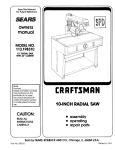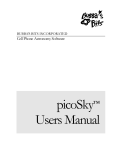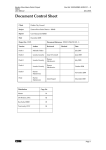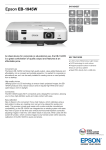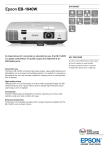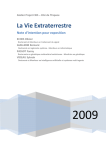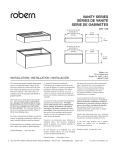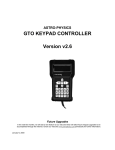Download September - Saguaro Astronomy Club
Transcript
S a g u a ro A s tro n o m y C l u b SACnews Volume 30 Issue 9 September 2006 SAC Officers The Bottom of the Bag Redeaux President: Rick Tejera By AJ Crayon 623-572-0713 [email protected] In response to Rick Tejera’s Bottom of the Bag article in the August 2006 issue of the SAC Newsletter, I thought it a good idea to inventory my astronomy "stuff" and share with everyone. With that in mind I have three containers an astro-box, a plastic container and a toolbox, all in dire need of an inventory. Vice President: Paul Lind 602-863-3077 [email protected] Treasurer: Paul Dickson P 602-841-7044 [email protected] Secretary: Susan Pritchard 623-934-7496 [email protected] Properties: Tom Polakis [email protected] 480-967-1658 Public Events: Jack Jones 623-322-1559 [email protected] AstroAstro-Imaging Sub Group: Al Stiewing 623-875-3969 [email protected] SACNEWS Editor: Rick Tejera, 623-572-0713 [email protected] ATM Subgroup : Thad Robosson 602-826-0328 [email protected] Inside This Issue The Bottom of the Bag Redeaux 1 NASA’ s Space Place– Deadly Planets 2 Last Call For Observation’’s– Sagittarius tion 4 President’s Message 6 Calendar of Events Bits & Pisces– minutes from the August General meeting. 7 9 Member Services 1010-11 First the astro-box made of plywood. Some years ago Bill Anderson, Steve Coe, David Fredericksen and myself built them as a joint project. They have been serving us well for many-a-year. Thad Robosson liked them so much he used them to model one for himself. Only his is larger and has a more professional look. OK, now on to the inventory. The astro-box has two compartments, top and bottom simple enough, with the top containing accessories for setting up the telescope. First to catch your eyes are boxes for the 9X50 finder, laser collimator, then there’s the connector rod for elevation encoder. Obviously the first two must stay. Occasionally I forget the connector rod until the Sky Commander has been calibrated and find out the altitude reading doesn’t change with that movement of the telescope. I then have to attach it and recalibrate. Would like a better place for the connector rod but have not found a more convenient location. There are two bright yellow wool caps that are kept here because they are the first line of defense for semi-cold observing conditions. I could keep one and put the other in the cold weather duffel bag. There is an eyeglass case with an old pair of glasses. Better really keep those in case one’s I’m wearing become unusable. Two, count them two, plastic ponchos, which bring back memories of attempting to scope in a driv- ing rain. I’ll keep these hoping they help me make better decisions. Insect repellent, duct tape, masking tape, Kleenex, anemometer and lens cleaner all seem to be items needing to stay. Here’s something interesting, a first aid kit. Better inventory it as it has been there for years – and has never been used. It has bandaids, cotton, and aromatic ammonia, antiseptic and some burn ointment and some other antiseptic pads. Only things to get tossed from here are Velcro strips, two empty glass cases and a C-clamp. I wonder what the aromatic ammonia might be used for? The bottom compartment mostly has items used for actual observing. First is the clipboard that also holds drawing forms, observing hood, and a small box with pencils, erasers, a blending stump and a pencil sharpener. There are also flashlights, and small weights to keep papers from being blow by nice breezes. Keepers all. There’s the filter box used mainly for planetary viewing – something that I wish the weather would allow more time for. Now here’s a box for gummed reinforcement rings – I forgot about this one. It contains a variable polarizing filter for lunar observing, used it a lot with the 8” scope. It doesn’t cut down on the light nearly enough with the 14”, nor is it enough for the 5” aperture stop, so it is unusable. I can’t part with this so guess I’ll have to purchase a smaller telescope so it can get used! There are some surprises deep down at the bottom of the draw. A cardboard light shield for observing Halley’s Comet, circa 1986 not the 1912 apparition, and a 2002 warning notice from the US Forest Service for violating forest closure (Continued on page 3) SACNEWS PAGE 2 V OL UME 3 0 ISS UE 9 Deadly Planets By Patrick L. Barry and Dr. Tony Phillips About 900 light years from here, there's a rocky planet not much bigger than Earth. It goes around its star once every hundred days, a trifle fast, but not too different from a standard Earth-year. At least two and possibly three other planets circle the same star, forming a complete solar system. Interested? Don't be. Going there would be the last thing you ever do. The star is a pulsar, PSR 1257+12, the seething-hot core of a supernova that exploded millions of years ago. Its planets are bathed not in gentle, lifegiving sunshine but instead a blistering torrent of X-rays and high-energy particles. Deepto Chakrabarty of MIT pointed the infrared telescope toward pulsar 4U 0142+61. Data revealed a disk of gas and dust surrounding the central star, probably wreckage from the supernova. It was just the sort of disk that could coalesce to form planets! As deadly as pulsar planets are, they might also be hauntingly beautiful. The vaporized matter rising from the planets' surfaces could be ionized by the incoming radiation, creating colorful auroras across the sky. And though the pulsar would only appear as a tiny dot in the sky (the pulsar itself is only 20-40 km across), it would be enshrouded in a hazy glow of light emitted by radiation particles as they curve in the pulsar's strong magnetic field. "It would be like trying to live next to Chernobyl," says Charles Wasted beauty? Maybe. Beichman, a scientist at JPL and Beichman points out the director of the Michelson Artist’s concept of a pulsar and surrounding positive: "It's an awful place to try Science Center at Caltech. disk of rubble called a “fallback” disk, out of and form planets, but if you can which new planets could form. do it there, you can do it Our own sun emits small anywhere." amounts of pulsar-like X-rays and high energy particles, but the amount of such More news and images from Spitzer can be found at radiation coming from a pulsar is "orders of magnitude http://www.spitzer.caltech.edu/ . In addition, The Space more," he says. Even for a planet orbiting as far out as the Earth, this radiation could blow away the planet's Place Web site features a cartoon talk show episode atmosphere, and even vaporize sand right off the starring Michelle Thaller, a scientist on Spitzer. Go to planet's surface. http://spaceplace.nasa.gov/en/kids/live/ for a great place to introduce kids to infrared and the joys of Astronomer Alex Wolszczan discovered planets around astronomy. PSR 1257+12 in the 1990s using Puerto Rico’s giant Arecibo radio telescope. At first, no one believed This article was provided by the Jet Propulsion worlds could form around pulsars—it was too bizarre. Laboratory, California Institute of Technology, under a Supernovas were supposed to destroy planets, not contract with the National Aeronautics and Space create them. Where did these worlds come from? Administration. NASA’s Spitzer Space Telescope may have found the solution. Last year, a group of astronomers led by V OL UME 3 0 ISS UE 9 SACNEWS (Continued from page 1) rules. It’s a warning not a fine or an arrest. Nice mementos of fun times gone by, nice keepsakes for laughs! There’s a folder with fireball reporting form – how long has that been buried in there? It also has some extra drawing forms. Send the drawing forms to the clipboard and toss everything else. Not much to depart with here, but some nice astro-box cleaning. Now on to the plastic container that is a little smaller than the astro-box and contains observing type paraphernalia. I get to this after the telescope is almost completely setup. On top are some wool gloves that should be in the winter observing duffel bag, a 110 volt battery charger for the fan that will now stay at home as one can’t charge out in the field, XP4 Flash Sky Commander and two three ring binders. One binder contains the AZ Sky Observing List, nice to have around for reference or using for a real-time observing list. The other has papers for observing reminders and observing challenges; it includes blank paper for notes while observing, latest SAC Roster and directions our observing sites. The directions also include longitude and latitude for reference or emergency. For atlases there’s the Bright Star Atlas and both Deep Space CCD Atlases. Can’t get rid of any. I could leave the Sky Commander User Manual at home as it doesn’t get used out in the field – at all. Yet it doesn’t take up much space. Digging down deeper it begins to get interesting. There’s both Uranometria, eyepiece box, anemometer instruction manual. Move this last one to the astro-box where it joins the actual unit and the bottom of the container. This setup is nice for when I’m home, with binders and atlases quickly available, but becomes rather awkward when observing. It works like this, after setting up the telescope the next item usually needed are the eyepieces and, guess where they are? Bottom of the box. So take everything out to get to the eyepiece box then put everything back. Can’t put Uranometria at the bottom because they won’t lay flat, ditto with Deep Space CCD Atlases. I could leave Uranometria, one of my security blankets, home or change things around before packing or get a container whose inside bottom is larger than 18”X12” and outside bottom is no larger than 18 ½”X14”. This last dimension might seem odd, but it is the size of the top of the astrobox, where the plastic box is stored. This one is still an open question waiting for an acceptable answer. While moving things around and imagining possible scenarios, a flash of brilliance hits me. This container is the ideal storage place for the connector rod, left in the top compartment of the astro-box, especially if placed by the Sky Commander! A nice change at that! Next is the toolbox that is actually more like a fishing tackle box, but it serves my astronomy and telescopes PAGE 3 purposes very nicely. Opening it up and it has three shelves and the bottom. Top shelf contains one allen wrench for collimation the secondary mirror. I should have a spare with me, but don’t. There is also a 2 ½” Leatherneck combination knife and tool set. This is a very handy item that has many uses and is a definite must stay. The eyeglass holder also stays, as does the 6” crescent wrench – used for setup and tear down of the platform. The compass is also a keeper and is needed to align the platform. Second shelf has two LED flashlights, bubble level, an incomplete 24” cable for a 12-volt connection to the Sky Commander for its heater when the temperature drops, an assortment of spare batteries and some wooden Popsicle holders. Not sure what this last item is for, but keep them in case because you never know when something like that may come in handy, besides there’s plenty of available space in the toolbox. The bottom shelf contains nuts, bolts, washers, screws, small plastic bags, a knife, rubber bands, a small Phillips screwdriver and a small blade screwdriver. All must be kept for emergencies – either mine, or someone observing with me. Now, finally, it is the bottom of the toolboxes turn. Pair of pliers and two larger screwdriver – again must keep for emergencies. Two sets of cables and two small boxes. One cable is for the platform controller, the other for Sky Commander. One box contains the platform controller. The other box contains parts for the Sky Commander, like the azimuth encoder, screws to attach it to the rocker box and another allen wrench. Unfortunately it is NOT the same size as the one for collimating, nor do I have a spare. So nothing gets tossed from here, but I need to add spare allen wrenches. So there you have it. From my point of view I don’t carry as much extra stuff as Rick, but certainly don’t pack light. There are few items I would part with, excepting for those already parted. There is, however, an outstanding question and that is how to pack the plastic container. Or should a new, slightly larger one be purchased. The relocation of the connector rod should save an extra minute in its new location. Hope to test this hypothesis out many times in the time remaining in this year. Allen wrenches; don’t know where to purchase them separately so will have to buy a complete set just for the two I need. The remaining ones can go in the terrestrial toolbox, found in my shed. Finally I need to get a 12-volt battery pack, not an automobile battery, for the Sky Commander’s heater. For this will also need someone checked out on electrical connections and soldering. Will someone else do a bottom of the bag? PAGE 4 SACNEWS V OL UME 3 0 ISS UE 9 Call For Observations– Observations– Sagittarius By A.J. Crayon What is there that can be said about Sagittarius? First it is supposed to be an archer, but I don’t look for that. Most of us, myself included, see it as a teapot. But there is more to see than just these two stellar formations. There is a dipper in these stars and it is called, appropriately, the Milk Dipper. Starting with µ, the end of the handle going towards the end of the bowl, there’s µ, λ, λ φ, σ, τ and ζ. Now, having started this conversation, how many dipper formations are there? Please submit the results with your observations. This month’s program included seven globular clusters, starting with the pretty faint Palomar 5, progressing through larger and brighter and finally ending with the magnificent M22. This month has an excellent assortment of observations from one naked eye observation and many from 8” to 18” telescopes. So much for the hype – now it is time for the observations. Palomar 8 The first to start with is magnitude 11.2, at almost 5’ and isn’t much for a globular cluster. But none the less it is still visible in many size scopes. 8" f6, Dobsonian; 135X 135X; Rick Tejera: Difficult to find. Had to match the star field to be sure the little blob that was only slightly bigger the surrounding stars was it. Averted vision helped a bit but this was a toughie in the 8". Possible hint of some halo around another wise stellar core (Sounds almost like a galaxy :)) 14" f10, SCT, 195X; 195X Joe Goss: Globular Cluster- Fairly small, fairly faint haze, few stars resolved in outer area may not be part of the cluster. 18” f4.5 Dobsonian; 209X; 209X Dan Gruber: Visible as a faint, diffuse, fairly uniform glow about 5’ in diameter. It appears roughly round with slightly irregular edges. Very few extremely faint (mag 14+?) stars resolved within the boundary of the object—these might be field stars. NGC6558 This globular has a magnitude of 9.3 and almost 4’ making it easier to spot. 14" f10, SCT, 195X 195X; Joe Goss: Globular Cluster- Small, fairly bright, fairly compressed, 8-10 stars resolved. 18” f4.5 Dobsonian; 209X; 209X Dan Gruber: Shows a dim, unresolved core less than 1’ in diameter. There is a very dim halo about 3 – 4’ in diameter. It appears asymmetrical, with the halo extending further S than N from the core. A few very faint (mag 13+) stars resolved at the extreme edge of the halo—these might be field stars rather than cluster members. NGC6652 At magnitude 8.9, this one is easier to find and we now begin to see some detail. 8" f6, Dobsonian; 135X; 135X Rick Tejera: Small & unresolved with some slight mottling. It is very suddenly brighter to the middle. Slightly elongated NE-SW. 14" f10, SCT, 195X 195X; Joe Goss: Globular Cluster- Small, fairly bright, fairly compressed, many stars resolved in outer area some may not be part of the cluster. 18” f4.5 Dobsonian; 329X 329X; Dan Gruber: A fairly bright, unresolved core about 1’ in diameter. The halo appears elongated E – W with overall dimensions about 5’ X 3’. Only a few outlying stars resolved. NGC6569 At mag 8.7 there is only slightly more to be seen, but what is helpful is that NGC6558 is in the same field. This was a wonderful view when first seen in my 8”. Note there is a difference between the descriptions of these two stellar aggregates of stars. 14" f10, SCT, 195X 195X; Joe Goss: Globular (Continued on page 5) V OL UME 3 0 ISS UE 9 (Continued from page 4) Cluster- Fairly small, fairly bright, 10-13 stars with AV. 16” f4.4’ Newtonian Newtonian; Rick Rotramel: GC - fL, fF, vRich, oval, a little brighter in the middle. 18” f4.5 Dobsonian; 329X 329X; Dan Gruber: This globular has no defined core. It’s a generally round, fairly uniform disc about 4’ in diameter brightening slightly toward the center. The core is unresolved, but a few stars can be resolved near the outer edge. NGC6624 The fifth in this sequence is a magnitude 8.3, only slightly brighter than the preceding two on or list. 8" f6, Dobsonian; 162X 162X; Rick Tejera: At higher power, this object becomes more round and the stars resolved at lower power are more to the center, indicating to me that the Southern part of the cluster is not as dense as the northern part. At higher power it becomes suddenly brighter to the middle. 10" f10, SCT, 178X 178X; Joe Goss: Globular Cluster- very small, very faint, very compressed, not well resolved. 16” f4.4’ Newtonian Newtonian; Rick Rotramel: GC - fS, pB, Rich, pRound, resolved, very much brighter in the middle. Nice! 18” f4.5 Dobsonian; 329X; 329X Dan Gruber: There is a bright-unresolved core no more than 2’ diameter. The halo is partially resolved, helped by averted vision. Total diameter is 4 – 5’. The edge of the cluster did not seem well defined; it simply “fades” into the stellar background. NGC6723 As the globular clusters become brighter we see more and more detail. 8" f6, Dobsonian; 122X; 122X Rick Tejera: At Higher power still noted as square in shape, and still nothing resolved. At this power it is mottled throughout and there seems to be a streamer of mottled stars off the SW corner. 10" f10, SCT, 178X 178X; Joe Goss: Globular ClusterFairly large, fairly bright, well resolved many chains of stars, very bright core. SACNEWS PAGE 5 18” f4.5 Dobsonian; 329X; 329X Dan Gruber: This is a rather loose-knit globular cluster with a fairly bright but somewhat indistinct core about 3’ in diameter. The halo is about 10’ in diameter and rather filamentous-looking, with some chains and clumps of stars. The halo is well resolved and the core is partially resolved. After this last observation I tried to put a thought in the observers mind and it was something like why wasn’t NGC6723 in the Messier Catalog. No one seemed to have bit on this as none of the observations made any kind of reference to the request. Guess that shows how knowledgeable SAC observers are. M22 Various telescopes; Rick Rotramel: GC - from memory: vL, vB, v vRich, pRound, this one is a beauty! Extremely Nice!! 8” f6, Newtonian, 38X; 38X Charlie Whiting: this GC is a ghostly smudge on a gray background. Two faint stars flank it to the NE (8.6 mag) and SE (9.5 mag). At 60X some stars become resolved but they are so faint and so tiny that they blend into the background granularity. I changed eyepieces, going to 160X and Wow! All of a sudden there are a bunch of resolved sparklers. They look like an 8-point snowflake. Adding a 2x Barlow the GC fills about 1/2 the FOV. This means that the GC is about 5' in diameter. However, the data says that the cluster is 17' or 24' in diameter. So my 5' is just the core. I did not try to see if outliers were visible. There are 30 or easier to count stars and probably another 30 or more not so easy to count stars. Plus there is still granularity, not so easy to see. 8" f6, Dobsonian; 122X 122X; Rick Tejera: Very large and bright cluster. It is pretty much round with a very dense central core. A grainy texture with mottling noted. There are many stars resolvable with both the core and the halo. Several dust lanes noted radiating out from the core in all directions through the halo. 10" f10, SCT, 178X 178X; Joe Goss: Globular (Continued on page 8) PAGE 6 SACNEWS V OL UME 3 0 ISS UE 9 President’s Message By Rick Tejera Finally, some decent observing weather. The To Heck With the Monsoons Star Party was a success. We had at least 20 vehicles finding their way to the Cherry II Site for a night of observing. This was my first night out since April, Ouch!, and I planned to make the most of it. Armed with AJ’s Call for Observations for September & October (Sagittarius & Vulpecula respectively), I got some new observations of some objects already visited and made few new celestial friends. I also managed to fins all of AJ’s Challenge objects, including Palomar 8 & Roslund 4. In the 8”, they’re not much to write home about, but then with 8” the challenge is actually seeing them. I imagine aperture would do these object a bit more justice, But I was happy to add a couple of toughies to the found file. I observed until midnight, a self imposed deadline due to obligations Sunday morning at church. When I left there were still quite a few folks who looked like they weren’t going anywhere. This is the kind of night that reminds us why we took up the hobby. Hopefully with the monsoon abating, we’ll have more of these nights Before it got dark, Steve Coe gave the 50 cent tour of telescopes to a few novice folks who came up. Two are close friend s of mine, It seems their interest has been there for a while and now with getting their feet wet and learning how to use their scope, I hope they’ll be joining us more frequently. OK, calendar marking time: we’ve got quite a few events coming up, so you should be able to get some time at the eyepiece in the next few months. First up is the rescheduled 5 Mile Meadow Star party, near Happy Jack, Sept 22nd & 23rd. It’s gonna get cold so be prepared. You’ll be glad you did. Next is the fall edition of the now Semi Annual Stonehaven pot luck star party on October 14th. Steve & Rosie Dodder again will generously host the event at their home/observatory In Maricopa. Directions are on page 10 of this issue. Two weeks later on Oct. 28th is the Fall Thunderbird Stargaze, held at Thunderbird park in Glendale. I’ve said it before and I’ll say it again; this is our biggest public outreach event, so please plan on attending with your telescopes. The more the merrier and the shorter the lines to have a look. It always a fun event, so don’t miss it. Last, but certainly not least, on November 17th & 18th, we’ll make our annual pilgrimage to Sentinel for the Sentinel-Schwaar Stargaze. Along with our regular Star Parties, you should be able to get out at least once to enjoy some dark sky. Considering the way the summer’s been, I’ll look forward to some well attended events. Till Next Month, Clear Skies Monthly Trivia Question Which crewmember on Apollo 13 first reported the explosion of the O2 Tank, saying “Okay, Houston, we’ve had Problem”? Answer to last month’s question: What is the most distant object visible to the naked eye? M33. Many sources will say M31, the Andromeda galaxy is the farthest object visible to the naked eye, but on clear, steady nights M33 is indeed visible. At 3.0 Million light years (according to the latest Hipparcos Data) it is slightly Farther than M31. V OL UME 3 0 ISS UE 9 SACNEWS PAGE 7 October 2006 SUN 1 MON 2 TUE 3 WED 4 THU 5 FRI 6 SAT 7 SAC Meeting, GCU 1930 8 9 10 11 12 13 14 SAC Star Party, Flat Iron Stonheaven Potluck 15 16 17 18 19 20 21 All Arizona SP/ Arizona City 22 23 24 25 26 27 28 Thunderbird Stargaze, Glendale 29 30 31 Schedule of Events for October 2006 Oct. 6th Moon is full at 2013mst Oct. 6th SAC General Meeting at Grand Canyon University at 1930, Speaker: Richard Payne, Topic: Digital Deep Sky Photography Oct. 13th Moon at third quarter at 1425 mst. Oct. 14th SAC Star Party at Flat Iron, Sunset 1759, End Ast. Twilight 1921 Moonrise 0033. Oct. 14th Stonehaven Potluck Star Party, Stonehaven Observatory, Maricopa. See page 10 for directions Oct. 20th20th-21st All Arizona Star Party at the Farnsworth Ranch. For more information, go to: http://www.eastvalleyastronomy.org/aasp.htm Oct. 21st Moon is new at 2214 mst. Oct. 28th Thunderbird Public Stargaze, Thunderbird Park, Glendale, 1700. Direction on page 10. Oct. 29th Moon at first Quarter at 1425mst Sept. 30th Nov. 17th & 18th Future Planning Moon at first quarter at 0404mst. Sentinel Schwaar Stargaze, Sentinel. PAGE 8 SACNEWS (Continued from page 5) Cluster- Very large, fairly bright, very bright center, very compressed, well resolved outer area, many arcs and chains of stars. 18” f4.5 Dobsonian; 135X 135X; Dan Gruber: A huge, beautiful cluster filling most of the 37’ FOV. The cluster has a well-defined and well-resolved core 10 – 12’ in diameter. The halo consists of a large number of stars in various patterns— chains, arcs, and groups. There’s a rather distinctive 5 star “arrowhead” asterism in the NE quadrant pointing toward the core. The halo also contains several apparent doubles plus some orange/topaz/red stars. At 329X: The core takes on a feathery appearance, especially on the N and E sides, with dark lanes running between rows of well-resolved stars. There also appears to be a distinct dark lane running N – S on the E side of the core Call for Observations The sly Fox, Vulpecula will command our attention for the month of October. I’ve wanted to look at red stars lately, actually anything in the telescope would do, and have discovered CG Vulpeculae has a color index of 4.28, which should put it in the color range. It is about 0.5° north of northeast from 1 Vulpeculae. Check it out and let us know your impression. Next is the Vulpeculae Cluster, Cluster but has other more recognizable names. It may be found 2.7° southeast from CG Vulpeculae. Once there you will immediately recognize its shape. Next is the open cluster Stock 1 1, located about 1.5° northeast of α Vulpeculae. Hint, it is pretty rich and bright. Now we move on to the open cluster NGC6823 and the faint nebulae NGC6820. NGC6820 Try filters on the nebula to see if they help. Finally we get to the Dumbbell Nebula, Nebula need anything more be said about this entry? Now for something a little more difficult than M27, Roslund 4 a rather small, faint rather rich open cluster located in the bright nebulae IC4954. IC4954 This duo is located about 1° 40’ east of northeast from 5th magnitude 15 Vulpeculae. Our final treat is at the eastern end of the V OL UME 3 0 ISS UE 9 constellation, near the border with Pegasus, NGC7080. NGC7080 It is 1° east of southeast from 5th magnitude 35 Vulpeculae. For November we are going to try something a little different – two constellations. They are Delphinus and Equuleus. There isn’t much at all in Equuleus and there are a scant few in Delphinus within reach of most our telescope. So taking both at the same time should take care of them; besides how many of us have observations in Equuleus? Delphinus will be first staring with NGC6891; NGC6891 a planetary located about 23’ south of mag 7.5 SAO105890. Next is the galaxy pair NGC6928 and NGC6930 both in the 12th magnitude range, fairly small by my standards, about 4’ apart and listed as IC1326. They are located about 17’ west northwest of 6.5 mag. SAO125960. The last two are globular clusters and part of the 400 Herschel list, NGC6934 and NGC7006. The brighter is NGC7006 NGC6934 located about 30’ northwest from 6th mag SAO125996 and should be visible in most finders. Finally, for Delphinus, is NGC7006 and located about 23’ to the northwest of 7th mag SAO106792. Now on to Equuleus where our first object is something rather new, Levy 70! It is also called the Equuleus S as it is an S shaped asterism located at RA 21h 09m Dec +06° 18' or almost 1° east northeast from 6th mag 4 Equulei. Be sure to include its PA in your observation. More information about David Levy’s list may be found at www.jarnac.org/ levylist.htm. Our second is NGC7015 is a faint and small galaxy; no wonder it is the only observation in my old 8”. The last of our tour for this mighty constellation is NGC7045, NGC7045 an interesting discovery by John Herschel in 1827 and seen as extremely faint and later identified as a double star! So get ready for this one because it is about 14th mag. To help with locating this gem it is at RA 21h 14m 50.2s Dec +04° 30' 25" or about 6' SSW from 9th mag SAO126648 but do not confuse with a 12th mag star a little farther away. So there you have it – two constellations for one month. V OL UME 3 0 ISS UE 9 SACNEWS PAGE 9 Bits & Pisces– Pisces– Minutes of the August 11th, 2006 General Meeting By Susan V. Pritchard The August 11, 2006 meeting opened at 7:40 by President Rick Tejera, who welcomed all visitors and members. He invited the visitors to introduce themselves and sign the guest book and receive a copy of the SAC newsletter. Paul Dickson gave the Treasurer’s Report—the club has a balance of $5,253.02. Most of the recent assets were from T-shirt sales and memberships. the “To Heck with the Monsoon” meeting; so far, the club is batting .500—5 hits and 5 misses. The new meeting date for the 5 Mile Meadow Star Party will be at Happy Jack on Sept. 22-23, 2006. The Thunderbird star party will be on Saturday, Oct. 28; and the Reach 11 event will be on Dec. 9. Steve Dodder said that the next potluck at Stonehaven Observatory is on Saturday, October 14, 2006. The next SAC general meeting will be on September 8, 2006 here at Grand Canyon University. The speaker will be Dr. Ted Bowell from Lowell Observatory, "Hunting for dangerous Earth-approaching asDr Paul Scowen, Our Main teroids" Announcements: Jack Jones reported that there were still some remaining T-shirts for sale—cheap! A.J. Crayon presented Bob Christ with the Urban 100 backyard award. Margie reported on the North Rim session of the Grand Speaker for August Canyon Star Party—she said that there were Show and Tell: Dave Fredrickson made a reproblems because there were so many ascent visit to Mt. Palomar Observatory in Calitronomers there, which caused difficulties with fornia and met the public affairs director, Scott, parking and set-ups. Rich who gave an excellent tour of Walker did report that he went the facility. He showed some to the Reach 11 Public Star nice slides of the visit. Party, but left because of cloud cover. Peter Argenziano After the break, Rick Tejera inbrought in some free astrontroduced Dr. Paul Scowen, omy and cartoon posters. form ASU, who spoke on the Orion MIDEX star telescope Upcoming Events: Next Saturproject from NASA. day, August 19, 2006 will be our regular monthly star party AJ Crayon presents the Urban 110 Respectfully submitted, at Cherry Road II site, and Award to Bob Christ. Susan V. Pritchard Secretary, Saguaro Astronomy September 16 will be the last regular star party held there. Steve Coe said Club that the next Novice Group will be at the August 31, 2006 Cherry Road site on August 19 as well. This is SACNEWS PAGE 10 V OL UME 3 0 ISS UE 9 SAC Meeting and Observing Sites Thunderbird Park Flatiron Star Parties Take the Loop 101 to 59th Ave. Turn North onto 59th Ave. (toward the Albertson's & Fry's Supermarkets) go about 1 1/2 miles on 59th Ave. until the road starts to climb the hill. The entrance to the park is on the left, 4/10 of a mile past the light at Deer Valley Rd. Go to the right of the amphitheater and follow the signs to the sight. Rangers will be there to guide you if you get misplaced (easy to do if you’ve never been there) 23 Stonehaven Potluck Star Party Head west on I-10 to the 339th Ave exit (exit 103). Turn North (right) and go two miles to Indian School Rd. Turn West (left) on Indian School and go 2 miles to 355th Ave. Turn North (right). This will turn into Wickenburg Rd. Follow this road for about 12 miles. Just after mile marker 23 you will go through Jackrabbit wash and pass a cattle guard sign. There is a dirt road just after the sign, marked by white painted rocks. Turn on to this road and follow it about .9 miles. Just after you pass through a wash, you’ll see the field on your left. If you hit the cattle guard, or the dirt road your on is next to a fence, you’ve missed the correct road. Go back and look for the white rocks. (see detail map above). TAKE I-10 SOUTH TOWARD TUCSON. EXIT AT QUEEN CREEK ROAD TOWARD MARICOPA. PROCEED THROUGH MARICOPA, PAST THE HARRAH'S AK-CHIN CASINO 2 MILES. TURN WEST (RIGHT) ON PAPAGO ROAD. PROCEED WEST 5 MILES. PAPAGO TURNS SOUTH (LEFT) AND BECOMES WARREN ROAD. APPROXIMATELY 4 MILES, YOU'LL SEE BARNES RD. FOUR STREETS PAST BARNES IS PRICKLY PEAR. TURN WEST, (RIGHT), 0.6 MILES, ACROSS DEER TRAIL. YOU CAN'T MISS THE DOME. 53750 W. PRICKLY PEAR RD. MARICOPA, AZ 85239 CELL-(602) 390-0118 HOME-(520) 424-9731 [email protected] SACNEWS V OL UME 3 0 ISS UE PAGE 11 SAC Membership Services Membership– Membership– Memberships are for the calendar year and are pro-rated for new members as follows: Jan– Mar: 100%; Apr– Jun: 75%; Jul-Sep: 50%; Oct-Dec; 25%. ! $28.00 Individual Membership Magazine Subscription Services ! $42.00 Family Membership The following magazines are available at a discount to club ! $14.00 Newsletter Only members. Check the magazines you wish to subscribe to ! $10.50 Nametag for members, or renew, and pay the club treasurer. Please allow 3-4 months for the order to be processed. Pinned Clasp ! Sky & Telescope $33.00/yr ! $12.00 Nametag for members, ! Astronomy $34.00/yr Magnetic Clasp (will be mailed to address below) ! Astronomy $60.00 for 2 Years Please Print Make Check Payable to : SAC Name:______________________________ Name:______________________________ Bring completed form to a meeting or mail it with your remittance to: Address:____________________________ Address:____________________________ SAC Treasurer c/o Paul Dickson City:_____________ City:_____________ St:_____ St:_____ Zip:_______ Zip:_______ 7714 N 36th Ave Phoenix, AZ 85051 85051--6401 Phone:______________________________ Phone:______________________________ ! Check here if this is an update of information already on file. E-Mail:_____________________________ Mail:_____________________________ SAC on the Internet Printed Newsletter Sac can save a lot of money if you download the PDF version of the newsletter. PDF files are readable by both PC’s and Macs. When the newsletter is published, a message will be sent to the address indicated above with the URL of the newsletter. Check the box below if you SACSAC-Announce@ [email protected]: freelists.org SAC- don’t have access to the internet or if your prefer a printed Announce is a mailing list for just club copy. announ cem ents , Typically 3-5 messages per month. ! Please send me a hard Copy of the newsletter SACSACSAC - Forum@ Forum @ freelists.org: freelists.org Forum is a general discussion mailing list. Topics should be related to Astronomy or SAC SACSAC-Board@ [email protected]: freelists.org SAC-Board is a mailing list for discussions of club business. If you’d like to see how the club is run (or not run), or have a question about the club, this is the list to read. Typically month to month matters are discussed. AZAZ-Observing@ [email protected]: AZ-Observing while not a Sac list , is well attended by SAC members. This is the list to with observing places around Arizona. Find out where people are going and what they saw. SAC has several EE-mail mailing lists. To subscribe, send an email to the email address and put Subscribe in the subject box. S AG UA R O A S T R O N OM Y C LLUB UB September 2006 5643 W. Pontiac Dr Glendale, AZ 8530885308-9117 Phone: 623-572-0713 Fax: 623-572-8575 Email: [email protected] Videmus Stellae www.saguaroastro.org SAC Schedule of Events 2006 SAC Meetings January 13th, 2006 July 14th, 2006 February 10th, 2006 March 10th, 2006 August 11th, 2006 September 8th, 2006 April 14th, 2006 October 6th, 2006 May 12th, 2006 November 3rd, 2006 June 9th, 2006 December: TBA Astro--Imaging ATM & Astro Group Meetings SAC Star Parties Date Sunset Astronomical Moonrise Twilight Ends Site Jan 21st, 2006 1752 1919 0044 F Feb 18th, 2006 1818 1942 2335 F Mar 18th, 2006 1842 2005 2230 F Apr 22nd, 2006 1908 2037 0347 F May 20th, 2006 1928 2108 0157 C Jun 17th, 2006 1943 2129 0029 C Jul 22nd, 2006 1938 2117 0346 C January 10th, 2006 February 7th, 2006 July 11th, 2006 August 8th, 2006 Aug 19th, 2006 1911 2042 0240 C Sep 16th, 2006 1854 1958 0135 C March 7th, 2006 September 5th, 2006 Oct 14th, 2006 1759 1921 0033 F April 11th, 2006 ? October 3rd, 2006 Nov 11th, 2006 1723 1850 2316 F May 9th, 2006 November 7th, 2006 Dec 16th, 2006 1725 1854 0449 F June 6th, 2006 December 5th, 2006 F= Flat Iron; C= Cherry Road












